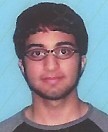
Author, filmmaker and professor M.K. Asante Jr. spoke Tuesday night. (Christopher Saul / The Daily Campus)
M.K. Asante Jr. spoke Tuesday night as part of the Tate Lecture series on his journey discovering how art is able “to take you from where you were to a place you had not considered.”
“To want more, to need more, to do better,” Asante said. “If I make an observation, I have an obligation.”
He discussed the notion he lives by first stating that, as writers, “we observe a lot.”
Once something is identified as missing, Asante asserted that the remedy for the hollow piece must be created. He gave an example in the story of he and fellow artists being inspired to make a documentary.
“There was a void of something we wanted to see that didn’t exist-so we created it,” Asante said.
Quoting Maya Angelou as one of his mentors, he said one of the best pieces of advice she gave him was that there must be a consistent flow of both give and take.
“When you get, give. When you learn, teach,” Asante said, in the words of Angelou.
He spoke on his memoir, “Buck,” written in first-person, present-tense so that the reader can “experience those [epiphanies]” as Asante did during his teenage years.
Asante cited Paul Robeson’s work as a source of inspiration
and direction.
“He had his art as a vehicle for showing a better world,” Asante said.
According to Asante, his coming-of-age occurred at the start of the memoir, during the police raid on his family’s home in Philadelphia during his brother’s arrest. The subsequent turmoil that followed him for many years following.
“[The police] assaulted my innocence,” Asante said. “[Then,] I saw my neighborhood around me crumble.”
Abandoned for a period of time by his father and watching his mother be institutionalized for depression and suicide attempts, Asante said it mirrored the significant “desolation happening in the city.”
He continued to outline his journey, as told in his memoir, but gave special attribution to his uncle’s notion that there are “two wolves in everyone.”
One is of anger, rage and hatred, and another of love, hope and creativity, according to Asante.
“They’re fighting inside of you. Which one wins? The one you feed,” Asante said, sharing the words of his uncle.
He also noted one of his most epiphytic self-discoveries at the start of his passion for writing was the fact that “we think in words.”
“If you limit someone’s words, you limit their thoughts,” Asante said. “I started to read a book a day and it started to ignite all these lights in my brain.”
As a writer, Asante wove his story of growth and coming of age through both his history and the history of African-Americans.
He stated one of his biggest influences to his art came from America’s history of slavery.
“I get great, great inspiration from the quilt makers during slave days,” Asante said.
He explained that the quilts embodied the same essential traits to finding success in one’s own being: resourcefulness, beauty, practicality and liberation.
As the quilt makers collected fabric pieces to “combine them all to create one,” they would “embed symbols into quilts” that held “extremely potent messages of liberation.”
“Freedom can’t be an elective,” Asante said. “The voice is there-sometimes, you have to chisel away at it.”
At the close, a law student in the audience asked Asante, “What statement would you like to make in your quilt?”
Asante took his time before leaving his audience with his own mantra: “Eliminate distractions, create energy, fear nothing, attack everything.”










